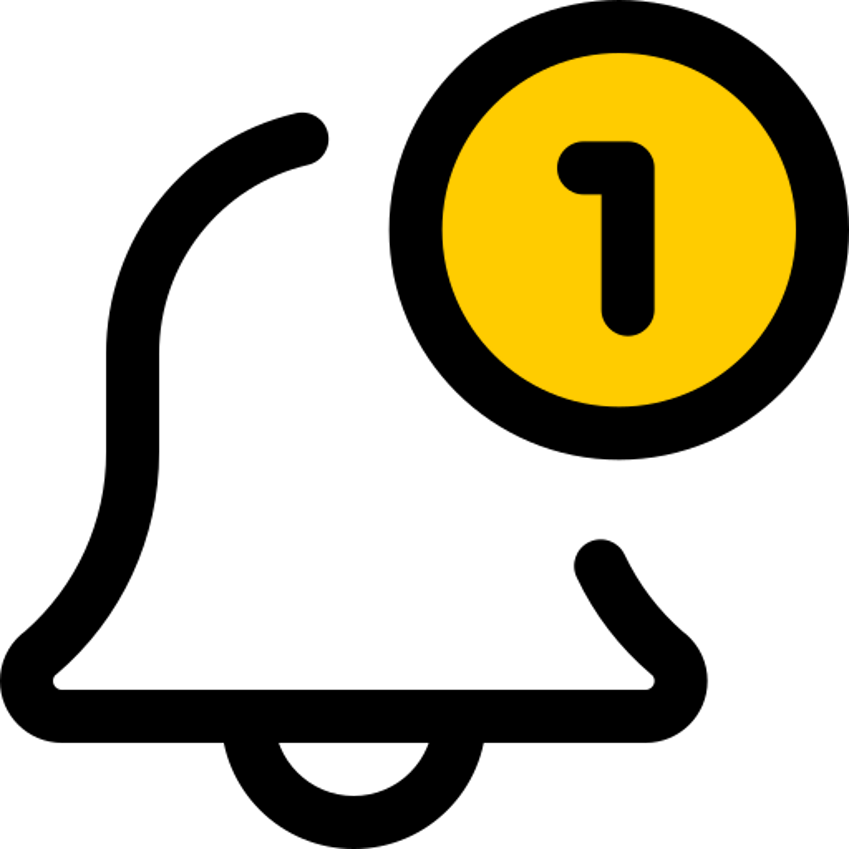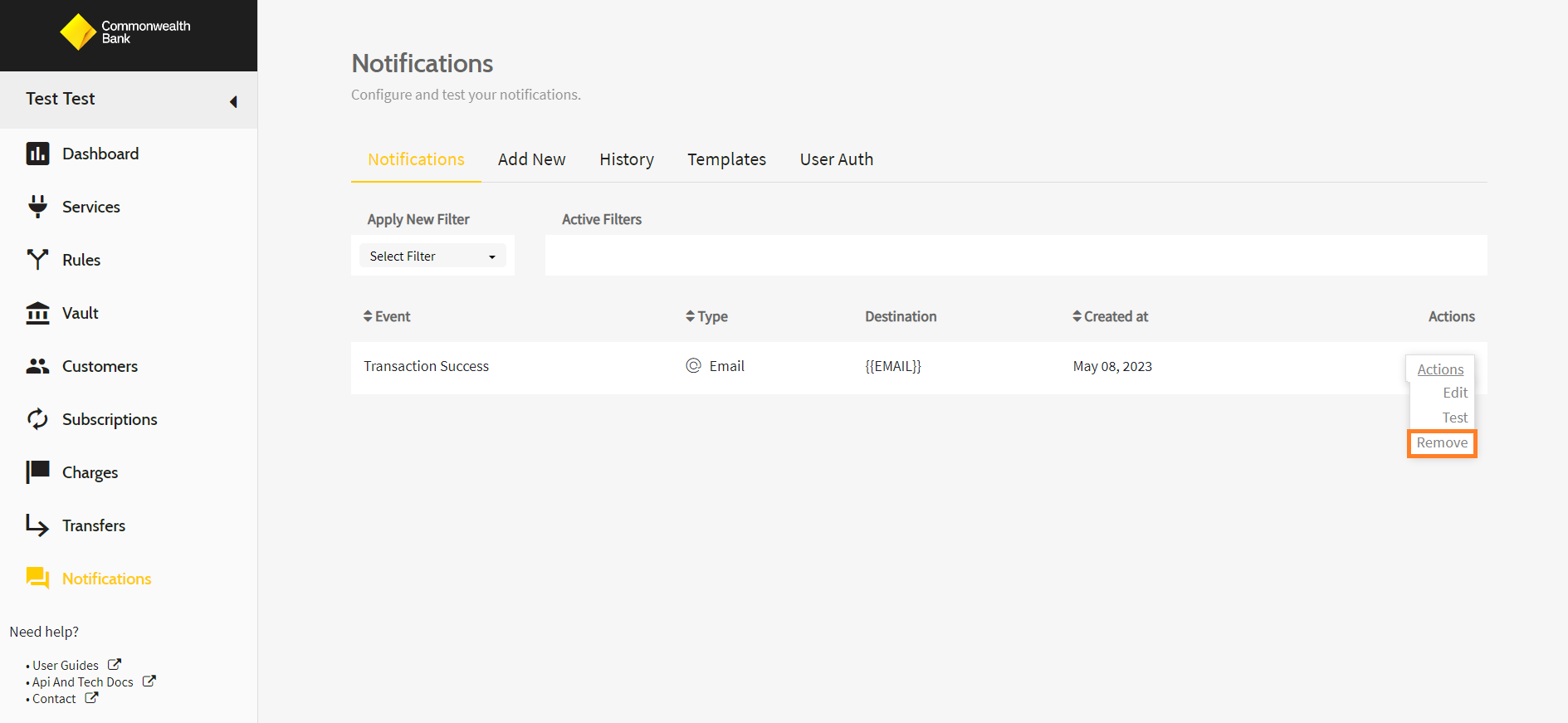Notifications - Emails
This document will guide you on how to correctly integrate Email Notifications within PowerBoard.
This document will guide you on how to correctly integrate Email Notifications within PowerBoard.
This document will guide you on how to correctly integrate Email Notifications within PowerBoard.

Before you begin
When sending requests to PowerBoard’s API, you must provide either a Public Key and/or Secret Key depending on your use case.
API keys are generated via PowerBoard’s Merchant Dashboard, in three easy steps:
- Login to the PowerBoard Merchant Dashboard.
- Click on the ‘My Company’ link and proceed to the ‘API and Settings’ heading.
- On screen, you’ll see both Public and Secret Key required to send requests to PowerBoard’s API.
Use PowerBoards Notification service to get real-time updates on transaction events within your integration.
Below is a list of events that PowerBoard currently send.
| Event name | Description |
|---|---|
| transaction_success | Occurs when a transaction is processed successfully |
| transaction_failure | Occurs when a transaction is processed unsuccessfully |
| subscription_transaction | Occurs when a transaction is processed successfully via a subscription |
| subscription_transaction_failure | Occurs when a transaction is processed unsuccessfully via a subscription |
| subscription_creation_success | Occurs when a subscription is created successfully |
| subscription_creation_failure | Occurs when a subscription is created unsuccessfully |
| subscription_updated | Occurs when a subscription was updated |
| subscription_finished | Occurs when a subscription has finished |
| subscription_failed | Occurs when a subscription has failed |
| refund_requested | Occurs when a refund is requested |
| refund_successful | Occurs when a refund is processed successfully |
| refund_failure | Occurs when a refund is processed unsuccessfully |
| card_expiration_warning | Occurs when a stored card will be expiring in 1 month |
| standalone_fraud_check_in_review | Occurs when a standalone Fraud Check is In review |
| standalone_fraud_check_success | Occurs when a standalone Fraud Check is successful |
| standalone_fraud_check_failed | Occurs when a standalone Fraud Check has failed |
| standalone_fraud_check_in_review_approved | Occurs when a standalone Fraud Check in review has been approved |
| standalone_fraud_check_in_review_declined | Occurs when a standalone Fraud Check in Review has been declined |
| Network Token Creation Failed | Occurs when a Network Token provisioning fails after 3 Failover attempts or during On Fly flow |
| Network Token Update (Issuer Update) | Occurs when a Network Token (expiry year, expiry month, status) is updated based on Issuer Updates from schemes |
| Vault Updated (Issuer Update) | Occurs when Vault token (expiry year, expiry month, status) is updated based on Issuer Updates from schemes |
| Network Token Registration Success | Occurs when Visa or Mastercard Registration is moved to Completed status |
| Network Token Registration Failure | Occurs when Visa or Mastercard Registration is moved to Failed status |
You can find a list of them above.
Email notifications require a pre-defined template that will outline what will be included in the body of the notification. This can be developed using HTML and via our variables captured from the respective transaction.
We have a number of variables available that can be included in the template:
| Variable |
|---|
| {{AMOUNT}} |
| {{BULK_REFERENCE}} |
| {{CHARGE_DESCRIPTION}} |
| {{CHARGE_ID}} |
| {{CHARGE_REFERENCE}} |
| {{CREATED_AT}} |
| {{CURRENCY}} |
| {{CUSTOMER_REFERENCE}} |
| {{EMAIL}} |
| {{FIRST_NAME}} |
| {{LAST_NAME}} |
| {{PHONE}} |
| {{TRANSACTION_AMOUNT}} |
| {{UPDATED_AT}} |
| API Endpoint | https://api.preproduction.powerboard.commbank.com.au/v1/notifications/templates) |
|---|---|
| HTTP Method | POST |
| Headers | x-user-secret-key- POWERBOARD_SECRET_KEY - This is your PowerBoard API Secret Key. Content-Type - application/json - Type will always be application/json. |
| Request Parameters | label - string - Name of template. body - string - Use custom text or/and predefined variables, in which PowerBoard automatically pulls values from customer, charge or subscription data objects. notification_event - string - Event to trigger a notification. type - string - Allowed values: message, fields. Default is message. html - boolean - Body could be in html or plain text format. Allowed values true, false, default is false. |
{
"label": "Email template",
"notification_event": "transaction_success",
"body": "Charge {{CHARGE_ID}} with {{AMOUNT}} {{CURRENCY}} created successfully.",
"type": "message"
}
{
"status": 201,
"error": null,
"resource": {
"type": "notification-templates",
"data": {
"_id": "64cb07f2f3b49c1c150f917e",
"created_at": "2023-08-03T01:50:42.310Z",
"updated_at": "2023-08-03T01:50:42.310Z",
"scope_id": "649a6edfb848941bea648bd6",
"scope": "company",
"archived": false,
"html": false,
"body": "Charge {{CHARGE_ID}} with {{AMOUNT}} {{CURRENCY}} created.",
"label": "Email third template",
"notification_event": "transaction_success",
"type": "message"
}
}
}
Register your email notification by making a request to our notification's endpoint, allowing the passed email to be notified of the required events.
| API Endpoint | https://api.preproduction.powerboard.commbank.com.au/v1/notifications |
|---|---|
| HTTP Method | POST |
| Headers | x-user-secret-key- POWERBOARD_SECRET_KEY - This is your PowerBoard API Secret Key. Content-Type - application/json - Content - Type will always be application/json. |
| Request Parameters | type - string - Type of notification: webhook, email destination - string - Where to send notification (secure https URL for webhook, email address for email) Note: Setting this parameter to {{email}} will configure the notification to send to the buyer's email address. event - string - Event to trigger a notification. transaction_only - boolean - If true, the payload of an event will include information on the latest transaction only and a charge ID. The rest of the fields will be omitted. By default, it is set to false. template_id - string - Custom template, which can be used with email notifications subject - string - Set subject of an email notification |
{
"event": "transaction_success",
"destination": "{{EMAIL}}",
"type": "email",
"transaction_only": false
"template_id": "CREATED_TEMPLATE_ID",
"subject": "Your email notification subject"
}
{
"status": 201,
"error": null,
"resource": {
"type": "notification",
"data": {
"transaction_only": true,
"_id": "64cb087edd42c226f9b6e0dc",
"template_id": "64cb07f2f3b49c1c150f917e",
"type": "email",
"event": "transaction_success",
"destination": "{{EMAIL}}",
"created_at": "2023-08-03T01:53:02.978Z",
"updated_at": "2023-08-03T01:53:02.978Z"
}
}
}
Test your email notification ensuring that it is receiving the correct response based on the subscribed event types. You can find steps to test your setup below.
You will need to setup the notification in our production environment, if previously configured in pre-production.
Before going live with your email notifications it is important to ensure it is working correctly and as expected. Follow the below steps to test and verify.
Step 1) Ensure the Notification setup steps are completed to correctly setup your PowerBoard email notification.
Step 2) Complete a transaction or event that will trigger the event you are Subscribed to.
Step 3) Verify your email notification is receiving the correct response with the correct template.
You can view a list of all notification logs sent by PowerBoard via API, if required. These can be filtered by date, type, event, etc.
See below example:
| API Endpoint | https://api.preproduction.powerboard.commbank.com.au/v1/notifications/ |
|---|---|
| HTTP Method | GET |
| Headers | x-user-secret-key- POWERBOARD_SECRET_KEY - This is your PowerBoard API Secret Key. Content-Type - application/json - Content - Type will always be application/json. |
| Query Parameters | limit - Pagination parameter to limit output to n , default = 100 , maximum value = 1000 event - Parameter to filter notification events. destination - Parameter to filter by email address or webhook URL. type - Parameter to filter notification by type. Values: email, webhook success - Parameter to filter success or failed notifications. Values: true/false created_at.from - Parameter to filter notifications date range. Format: ISO 8601 (yyyy-mm-ddThh:mm:ss.sssZ) or short type of date (yyyy-mm-dd) or specify time offsets from UTC (yyyy-mm-ddThh:mm:ss+hh:mm). created_at.to - Parameter to filter notifications date range. Format: ISO 8601 (yyyy-mm-ddThh:mm:ss.sssZ) or short type of date (yyyy-mm-dd) or specify time offsets from UTC (yyyy-mm-ddThh:mm:ss+hh:mm) sortkey - Sorting key parameter i.e. created_at sortdirection - Sorting order direction parameter ASC or DESC (DESC by default) |
You can unsubscribe to a notification via our API or via the PowerBoard merchant dashboard.
Step 1) Identify the notification Events and ID’s you would like to unsubscribe to.
Step 2) Make a request to our DELETE notifications endpoint using the notification ID as a Path parameter.
See below example:
| API Endpoint | https://api.preproduction.powerboard.commbank.com.au/v1/notifications/{id} |
|---|---|
| HTTP Method | DELETE |
| Headers | x-user-secret-key- POWERBOARD_SECRET_KEY - This is your PowerBoard API Secret Key. Content-Type - application/json - Content - Type will always be application/json. |
| Path Parameters | id - YOUR_NOTIFICATION_ID - The ID of the notification provided when initially created |
Step 3) Verify the event notification is longer being received by the registered destination.
Step 1) Login to the PowerBoard merchant dashboard using your merchant user credentials.
Step 2) Using the left-hand side menu, navigate to the Notifications section.
Step 3) Identify the notification you would like to unsubscribe to. You can search through Notification or Event type via the Filters on the top of the page.
Step 4) On the notification you would like to delete. You will find an “Actions” button on the right-hand side of the page. Click this and select “Remove” from the dropdown.

Step 5) Verify the event is no longer triggering a notification to the registered email destination.
Updated 7 months ago